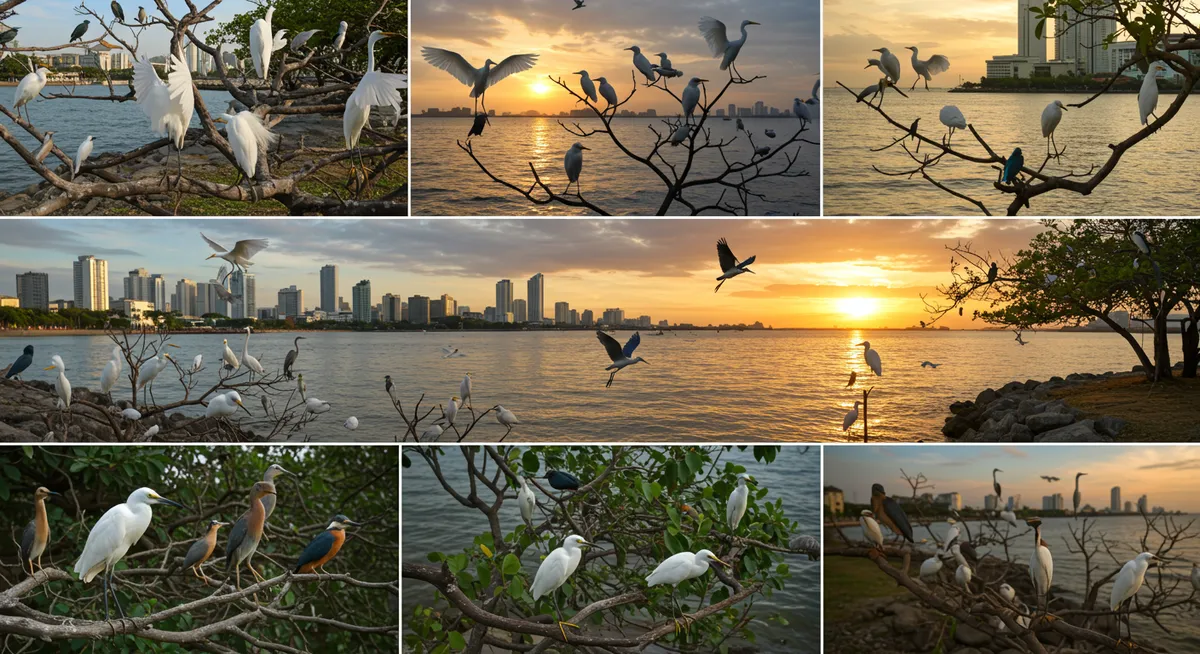
Top Bird Watching Spots Near Manila
Table of Contents
Want to find the best nature experiences for this destination? Chat with our nature tourism specialist!
Get Nature TipsCategory: bird-watching-spots-near-manila
Top Bird Watching Spots Near Manila
As an avid birder and nature enthusiast who has explored countless ecosystems across the Philippines, I can confidently say that finding incredible bird watching spots near Manila is easier than you might think. Many assume the bustling capital offers little in terms of wildlife, but surprisingly, several accessible sanctuaries provide refuge for a stunning array of avian species, from resident forest birds to migratory shorebirds. If you're keen on reconnecting with nature without traveling too far, these accessible destinations offer a fantastic opportunity to observe diverse birdlife just a short drive away from the urban sprawl. Getting started with birding is an incredibly rewarding experience, opening your eyes to the subtle wonders of our natural world.
Las Piñas-Parañaque Critical Habitat and Ecotourism Area (LPPCHEA)
My personal favorite for accessible urban birding is the Las Piñas-Parañaque Critical Habitat and Ecotourism Area (LPPCHEA). This Ramsar-designated wetland is a vital sanctuary nestled surprisingly close to the city, making it one of the premier bird watching spots near Manila. It serves as a crucial stopover for migratory birds traversing the East Asian-Australasian Flyway, and a permanent home for various resident species. During my visits, I've spotted everything from the endangered Philippine Duck to vibrant Kingfishers and a plethora of egrets. Remember to bring your binoculars and wear appropriate footwear, as the trails can be muddy. The best time to visit is during the migratory season, typically from September to March, when the avian population truly flourishes, offering unparalleled viewing opportunities.
La Mesa Eco Park
For those seeking a green escape within Quezon City, La Mesa Eco Park provides a tranquil setting for urban birding. While not as wild as LPPCHEA, this expansive park, part of the La Mesa Watershed, offers excellent opportunities to observe common urban and lowland forest birds. You might encounter Philippine Bulbuls, different species of flowerpeckers, sunbirds, and even some raptors soaring overhead. I've personally enjoyed peaceful mornings here, noting how easily the park helps preserve Manila's nature attractions amidst urban development. It's a fantastic spot for families and casual birders. Don't forget to check out what La Mesa Eco Park Manila activities are available, as combining birding with other recreational pursuits can make for a delightful day out. This park embodies the spirit of accessible green spaces.
Candaba Wetlands
While a bit further afield, the Candaba Wetlands in Pampanga is undeniably one of the most significant bird watching spots near Manila, albeit requiring a slightly longer drive. This sprawling complex of freshwater ponds, swamps, and marshes is a major wintering ground for tens of thousands of migratory waterfowl and shorebirds. It's truly a spectacle to behold, and my experience here has always been breathtaking. Species like Pintails, Shovelers, and various sandpipers are abundant during the migratory season. For an authentic ecotourism experience, consider visiting Candaba, as it perfectly aligns with the principles outlined in any ecotourism Manila Philippines guide. The local community often participates in conservation efforts, making your visit contribute to their ongoing success in protecting these vital habitats. It’s a photographer’s paradise.
Tips for Successful Bird Watching Near Manila
Maximizing your bird watching experience around Manila involves a few key considerations. Firstly, timing is crucial; the migratory season (September to March) generally offers the most diverse sightings. Early mornings are typically best for bird activity. Secondly, remember to bring essential gear like binoculars, a field guide specific to Philippine birds, and a camera with a good zoom. Patience is also a virtue in birding! For comprehensive planning, it's wise to consult resources like the best time to visit Manila nature attractions in 2025 to align your trip with peak avian presence and favorable weather conditions. Lastly, always practice responsible birding: maintain a respectful distance, avoid disturbing birds, and minimize your impact on their natural habitats. Always put the well-being of the birds first.
Frequently Asked Questions
What is the best time of year for bird watching near Manila?
What should I bring for a bird watching trip?
Are these bird watching spots accessible by public transport?
Manila, despite its urban density, offers surprising havens for bird enthusiasts. Exploring these diverse bird watching spots near Manila allows you to witness the Philippines' rich avian biodiversity firsthand. Whether you're a seasoned birder or a curious beginner, these accessible sanctuaries provide memorable encounters with both resident and migratory species. So, grab your binoculars, plan your visit, and prepare to be amazed by the feathered wonders awaiting you just outside the city. Don't miss the chance to connect with nature and appreciate the vital role these critical habitats play in our ecosystem.